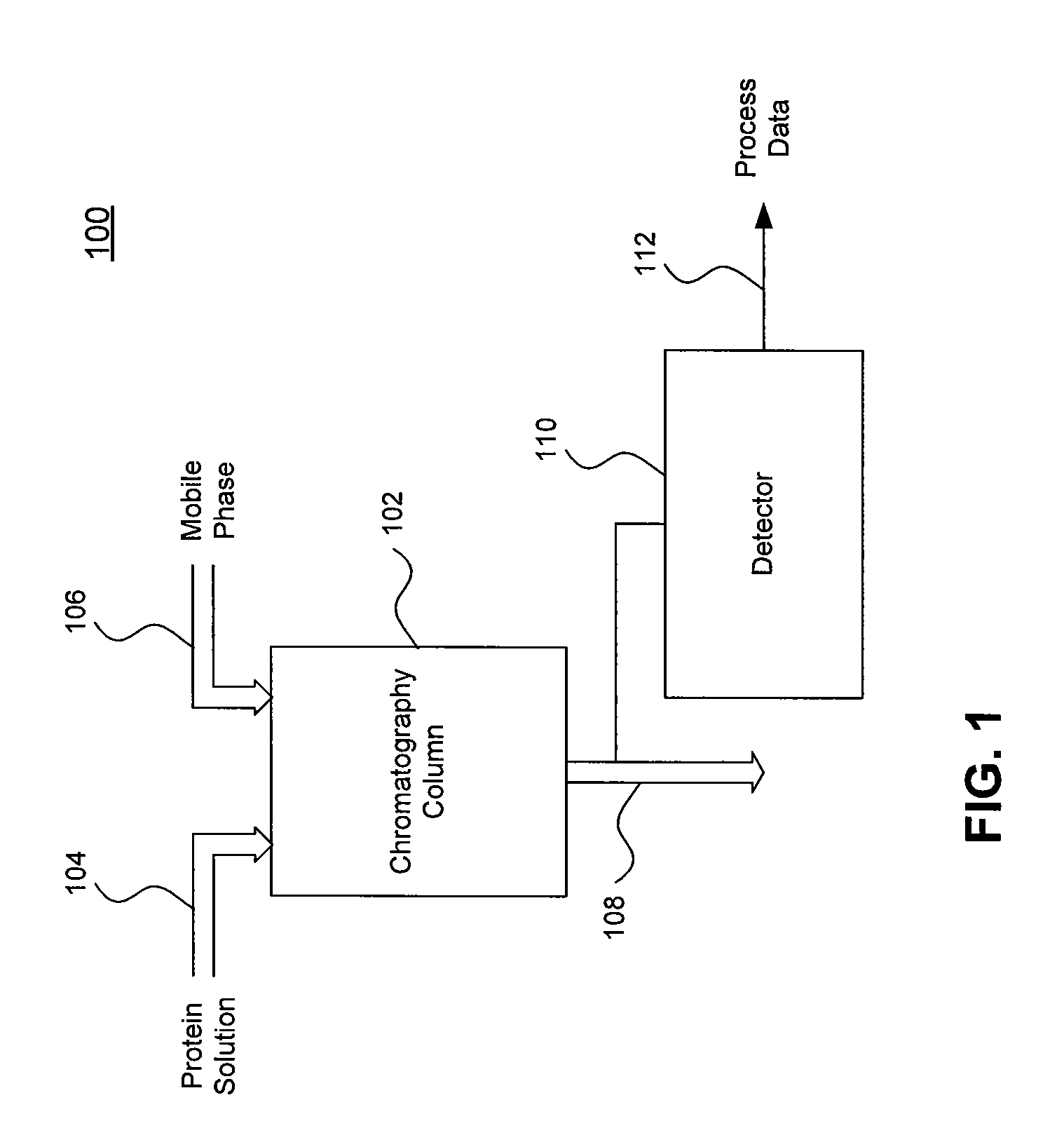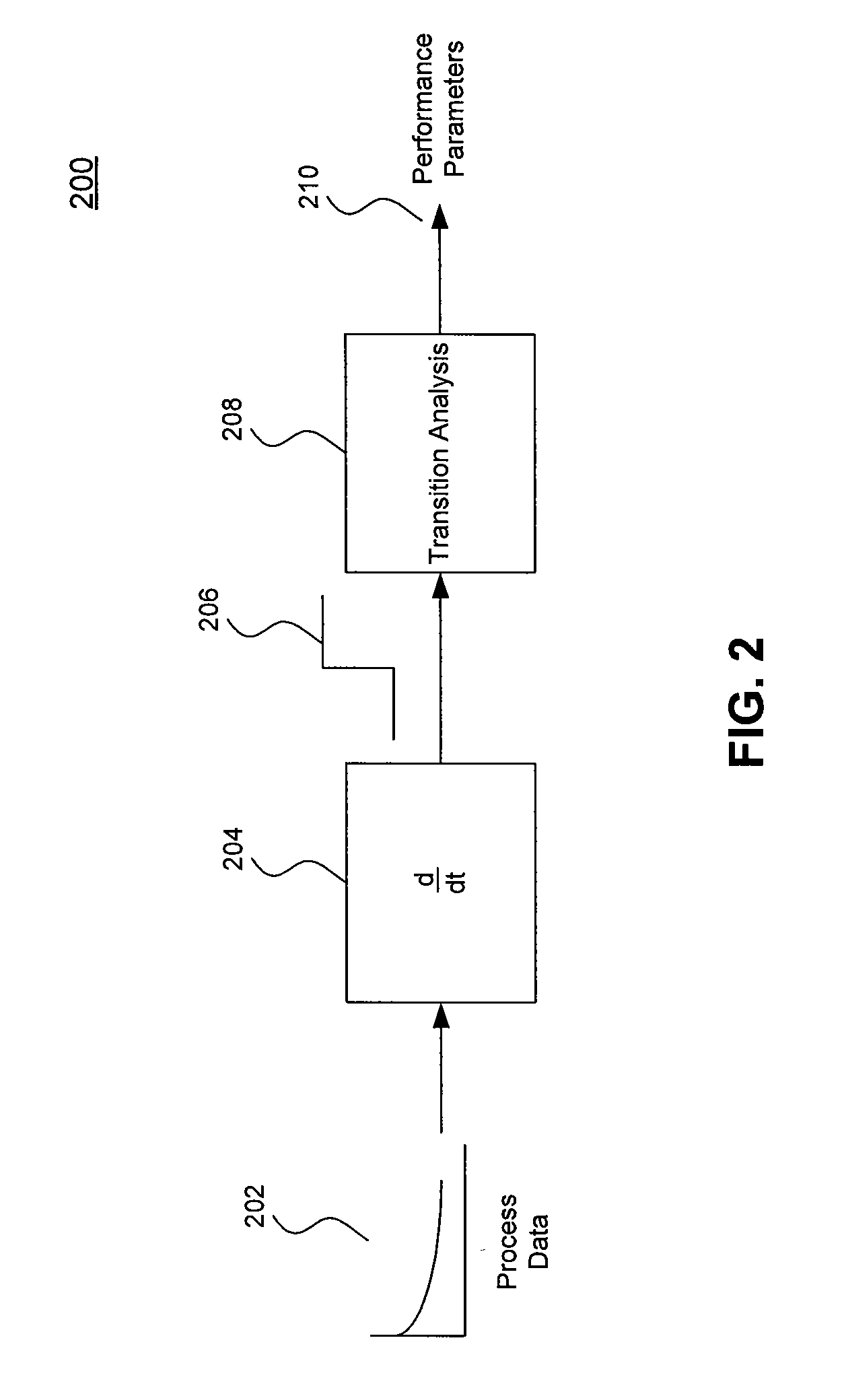Systems and Methods for Evaluating Chromatography Column Performance
a technology of chromatography and column performance, applied in the field of chromatography, can solve the problems of product rejection, poor protein separation, increased mobile phase dispersion, etc., and achieve the effect of time-efficient performance examination and evaluation of column performan
- Summary
- Abstract
- Description
- Claims
- Application Information
AI Technical Summary
Benefits of technology
Problems solved by technology
Method used
Image
Examples
example 1
Detecting Upward Trend in Host Cell Protein Contamination
[0102]During preparative scale production of a protein (via multiple and separate column chromatography “runs”) an upward trend in mammalian-Host Cell Protein (HCP) contamination was observed (FIG. 15). The cause of the increased contamination, however, was not readily apparent based on univariate analysis of the available parameters. An initial hypothesis was that increased HCP levels was being caused by increased overall product output (i.e., increased product titer). Investigation revealed, however, that this could not be the sole root cause because chromatography runs with lower product titers were displaying similar upward HCP trends. Further compounding identification of the cause was the fact that batches were being produced in two separate units (Unit 1 and Unit 2) and higher titer batches were being produced in Unit 1 because a new cell bank was being used in this particular unit. Thus, decoupling the increasing HCP t...
example 2
Analyzing Causes of Process Related Impurities
[0108]Analysis of the host cell protein (HCP) concentration in the final Drug Substance (DS) showed a substantial variation over a number of manufacturing batches (HCP at 0.5 to 7.9 ppm). The main suspect of the root cause analysis pointed towards an Anion Exchange Chromatography (AIEX) step in the purification procedures with the main hypothesis being that the performance of the step declined with repeated use of the stationary phase (i.e., AIEX media). In order to test this hypothesis, continuous traces of the UV absorption at 280 nm as well as conductivity traces were analyzed. The goal was to build a multivariate process model and correlate a quantitative analysis of the continuous data to off-line quality attribute tests. An MVA model was built with an initial set of 58 process variables. After ranking the most important variables, a reduced model with 14 parameters extracted from the UV traces of the AIEX chromatogram was obtained....
example 3
Analyzing Causes of Product Related Impurities
[0109]The concentration of a product related impurity was observed to increase over a number of manufacturing batches (0.9 to 1.9%). Investigation revealed two main suspects: 1) a potential variation of the impurity introduced by cell culture conditions; and, 2) deteriorated packing of the hydrophiboc interaction chromatography (HIC) step responsible for removing the impurity.
[0110]Continuous signals from multiple chromatograms across different cell culture batches and multiple column packings were analyzed using UV absorption at 280 nm and by analyzing conductivity signals. The goal, then, was to build a multivariate process model and correlate continuous data to off-line quality attribute tests. The resulting PCA model used 25 parameters; 17 parameters stemming from analysis of UV traces, 7 parameters resulting from an analysis of conductivity traces, and 1 parameter from the number of successive uses of the stationary phase (i.e., the...
PUM
| Property | Measurement | Unit |
|---|---|---|
| chromatography performance | aaaaa | aaaaa |
| chromatography column performance | aaaaa | aaaaa |
| chromatography | aaaaa | aaaaa |
Abstract
Description
Claims
Application Information
 Login to View More
Login to View More - R&D
- Intellectual Property
- Life Sciences
- Materials
- Tech Scout
- Unparalleled Data Quality
- Higher Quality Content
- 60% Fewer Hallucinations
Browse by: Latest US Patents, China's latest patents, Technical Efficacy Thesaurus, Application Domain, Technology Topic, Popular Technical Reports.
© 2025 PatSnap. All rights reserved.Legal|Privacy policy|Modern Slavery Act Transparency Statement|Sitemap|About US| Contact US: help@patsnap.com



